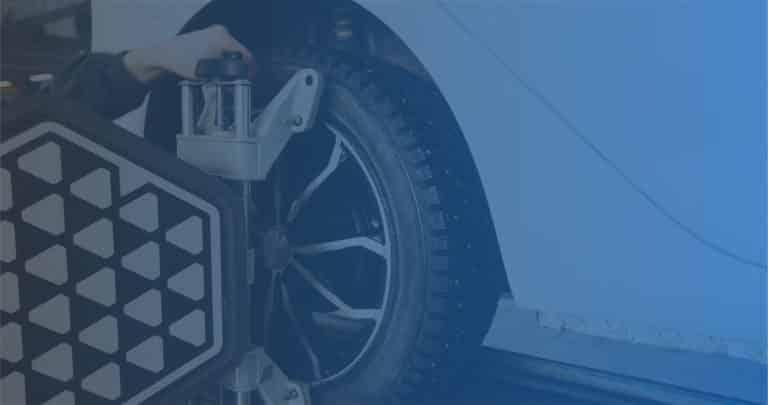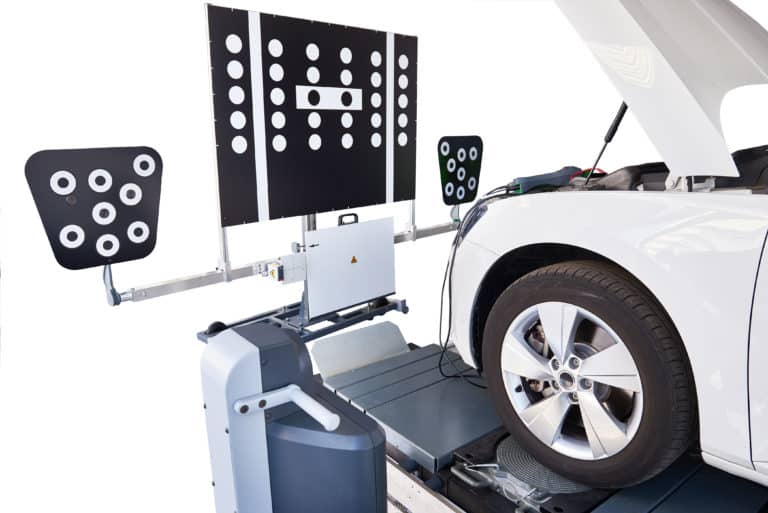Slammed on your brakes recently? Hopefully, your actions helped to avoid a crash. Not every driver is so lucky. In emergency situations, 69% of drivers don’t press the brakes fast enough or hard enough to get the most stopping power out of their brakes. Meaning, your brakes have more stopping power than you utilize due to inexperience with emergency stop situations. Less than optimal braking means slower stop times, more crashes, and more injuries. Enter brake assist — a vehicle safety system built to boost your stopping power during emergency and panic braking maneuvers.
This article will delve into brake assist systems and where they fit in amongst the wealth of other vehicle safety features available on today’s vehicles.
What is Brake Assist?
Brake Assist (BA), also known as BAS, for Brake Assist System, is an innovative driver adaptive safety system designed to maximize brake force during emergency scenarios. This technology, a crucial component of Advanced Driver Assistance Systems (ADAS), is activated by a driver’s sudden panic or emergency braking. Brake Assist ensures your vehicle’s brakes are applied with full strength, significantly reducing your braking distance and enabling quicker stops in urgent situations. Originating in the late 1990s, Brake Assist has evolved from a luxury safety feature to a standard inclusion in most modern vehicles’ braking systems.
Brake assist systems significantly impact a variety of potential crash situations. These systems, equipped with brake assist technology, enhance the vehicle’s ability to stop more quickly during an emergency by automatically increasing braking pressure. Here are the scenarios where brake assist is particularly beneficial
- Rear-end collisions
- Head-on collisions
- Merging collisions
- Intersection collisions
- Vehicle-pedestrian collisions
- Obstacle collisions
- Left roadway accident collisions
Brake Assist aims to reduce these types of crashes, and in an emergency situation when it can’t prevent them, it seeks to reduce their severity. Foremost are rear-ended collisions. Nearly 3 in 10 car accidents are rear-end collisions. Reducing the rate of rear-end collisions would affect thousands of lives each year.
How Does Brake Assist Work?
Brake Assist, also referred to as emergency brake assistant, reduces stopping distance when activated by as much as 45 percent. But how?
In general, the Brake Assist System (BAS) takes cues from how the driver presses the brake pedal by measuring speed and force against baseline thresholds. When a driver slams on the brakes fast enough, with enough pressure, an emergency is detected. Then, the Brake Assist System applies the brakes at full braking pressure until the anti lock braking system (ABS) takes over to prevent the wheels from locking. There are two main types of BAS, mechanical and electronic.
Mechanical Brake Assist Systems
Older vehicles equipped with built-in brake assist technology feature what are commonly known as mechanical brake assist systems. These systems utilize pre-set thresholds to detect emergency braking situations based on the driver’s actions. Mechanically configured, they activate once the driver’s braking force exceeds these thresholds. At this point, braking power is seamlessly transferred from the brake piston valve to the brake booster, thereby enhancing the vehicle’s braking effectiveness. Unlike their modern counterparts, mechanical brake assist systems are not designed to adapt to the varying styles of individual drivers, making them a one-size-fits-all solution within the brake assist systems technology.
Electronic Brake Assist Systems
In newer vehicles, electronic brake assist systems have become increasingly prevalent, offering the advantage of having an Electronic Control Unit (ECU) to analyze braking patterns against predefined thresholds. Unlike traditional systems, the ECU in electronic BAS assesses a driver’s braking behavior, comparing it to established benchmarks and deploying emergency braking power when necessary. The most advanced iterations of these systems go a step further by recording information about individual drivers’ braking styles, allowing for a tailored adaptation to each driver’s unique habits, enhancing safety and responsiveness.
Related Braking Systems
It’s hard to talk about modern brake assist systems without mentioning a few related but distinct braking systems. Brake Assist is often bundled with these braking systems and braking features, but it has a particular function.
Anti-Lock Braking System
Since their intro in the late 1970s, anti-lock braking systems (ABS) grew in popularity through the 1990s and only became mandated on all new light vehicles since 2012 (along with ESC).
Anti-lock brakes are aptly named. They keep the wheels from locking in emergency braking situations where locked wheels mean losing control of your vehicle.
In older vehicles not equipped with ABS, drivers have to manually pump the brake pedal during emergency braking, so that the wheels don’t lock up and cause you to lose control. Anti-lock brakes keep you in control of the vehicle by detecting differences in wheel speed and rapidly pulsing the brakes until the wheels are all turning at the same speed.
A variety of ABS subsystems add even more functionality to keep drivers safely in control. Like brake assist, these features work with your vehicle’s ABS. Other systems that try to control the wheel spin and increase driving stability include the following:
- TCS — Traction control system — Prevents wheel slippage during acceleration on slippery surfaces.
- EDL — Electronic differential locking — Uses wheel sensors to determine if one wheel is spinning faster than the others. If so, it applies braking to balance traction needs, especially when accelerating or hill climbing when one of your wheels has reduced traction.
- EBD — Electronic brakeforce distribution — Changes the amount of braking power sent to each wheel during the braking process to maintain driver control and shorten stopping distances when the rear wheels are carrying a large load.
- ESC — Electronic stability control — Helps drivers maintain control during curves and emergency steering situations. Stabilizes the car when it starts to deviate from the pathway intended. It helps prevent rollovers and other crashes due to understeering or oversteering. Also called electronic stability program (ESP).
So, how are Brake Assist and ABS related?
As Toyota puts it, “Brake Assist (BA) is designed to help the driver take full advantage of the benefits of ABS.”
Automatic Emergency Braking
Automatic emergency braking (AEB), also known as autonomous emergency braking, is an advanced driver assistance system (ADAS) that automatically applies the brakes based on vehicle speed and distance to an obstruction like a stopped or slower-moving vehicle. This ADAS feature is a distinctly different system from brake assist.
Where do AEB and BAS differ?
AEB doesn’t require the driver’s foot pedal action to initiate the braking. It applies the brakes automatically. It’s important to note this difference because BAS does require the driver to step on the brakes to benefit. AEB represents a step further in vehicle safety automation and to US regulators, it doesn’t go without notice. As stated on its website, “NHTSA believes AEB systems represent the next wave of potentially significant advances in vehicle safety. Dynamic brake support and crash imminent braking are AEB systems that potentially save lives and reduce moderate and less severe rear-end crashes that are common on our roadways.”
Dynamic Brake Support and Crash Imminent Braking
Considered as the two AEB systems, dynamic brake support (DBS) and crash imminent braking (CIB) use data from forward-facing vehicle sensors, including radar, camera, and lidar, to inform their operation. DBS kicks in when the vehicle detects the likelihood of a rear-end crash with a vehicle ahead and the driver brakes, but not hard enough. DBS kicks in to supplement the driver’s braking to attempt to avoid a crash.
Sound familiar? DBS is essentially a brake assist system, but it’s informed and initiated by ADAS sensor data rather than waiting for a driver’s foot. DBS bridges the gap between traditional brake assist and ADAS using onboard technology. DBS could save 25 lives each year if installed on all U.S. light vehicles. It could prevent even more injuries — an estimated 107,000 minor to moderate injuries and 2,100 serious to critical injuries.
On the other hand, crash imminent braking (CIB) is what people generally think of as AEB. When a driver fails to respond to warnings with braking action, CIB automatically applies the brakes to avoid or mitigate the damage from a crash. If installed on all light vehicles, CIB could prevent approximately 200,000 minor injuries, 4,000 serious injuries, and save 100 lives annually.
Regulating Brake Assist and AEB
While European lawmakers have found BA so satisfactory that they regulated it on all new light vehicles, US officials have opted to lean more towards regulating automated braking (AEB). Rather than BA’s passive driver adaptive system that requires driver action to initiate the benefit, regulations will be focused on what governing bodies see as the biggest potential benefit. In the U.S., twenty automakers pledged voluntarily to make AEB with forward collision warning (FCW) standard on light-duty vehicles by September 2022. Ten automakers have already met the commitment ahead of schedule, including Audi, BMW, Hyundai, Mazda, Mercedes, Subaru, Tesla, Toyota, Volvo, and VW.
Integrated ADAS Warning and Braking Technologies
By now, we’ve explained how Brake Assist is hardly the only braking feature on your vehicle that is trying to keep you from crashing your car. Whether your car has traditional BA, its clever cousin DBS, or both (some do), these systems are part of multi-hyphenate safety packages of extensive features working in sequence to help you.
The forward collision sequence is an excellent example of how these safety systems work in conjunction. For example, if sensors calculate a crash risk, FCW warns you. Next, either your foot on the brake initiates traditional BAS, or in a BAS-equipped vehicle, DBS does it automatically and is standing by for you to use it. Furthermore, vehicles equipped with AEB follow up brake assist by automatically applying the brakes (CIB) if the driver fails to act. So, the complete sequence starts with a forward collision warning to help increase response time, gives you more braking power when you don’t step down hard enough (with BA or DBS), and when the driver doesn’t use the brakes, CIB initiates them. The sequence is important. It provides the driver maximum control until the calculated last possible moment.
Vehicle Manufacturer Advanced Braking Naming
There’s one more snag. If braking systems weren’t complicated enough, regulation is so behind that each OEM has unique naming systems for different advanced braking systems. Here are a few examples:
Toyota Pre-Collision System
The 2022 Toyota Corolla includes Toyota Safety Sense 2.0 and the Star Safety System.
The Toyota Safety Sense 2.0 package includes its Pre-Collision System with Pedestrian Detection (PCS w/PD). The Star Safety System includes Brake Assist, ABS, Traction Control, and Vehicle Stability Control, and Electronic Brake-force Distribution, among other things. Here’s how Toyota describes this ADAS system:
“For Tss 2.0, the Pre-Collision System, or PCS, uses an integrated forward-facing camera and grill-mounted radar system designed to help mitigate or avoid frontal collision. TSS 2.0 enhances the pre-collision system with the addition of low light detection for vehicles and pedestrians, as well as daytime detection of bicycles.
When PCS determines that the possibility of a frontal collision with another vehicle, pedestrian, or bicycle is high, it prompts the driver to take evasive action and brake by using an audio and visual alert. If the driver notices the hazard and brakes, PCS may use brake assist to provide additional braking force.
If the driver does not brake in a set time and the system determines that the possibility of a frontal collision with another vehicle is extremely high, the system may automatically apply the brakes, reducing speed to help mitigate the impact or avoid the collision entirely, if possible.”
See more in this instructional Toyota video.
Honda Collision Mitigation Braking System
New Honda vehicles include ABS, EBD, Vehicle Stability Assistant with Traction Control, traditional BA, as well as the Honda Collision Mitigation Braking System (CMBS), which is part of the Honda Sensing ADAS technology suite. Here’s how Honda’s forward collision sequence presents to drivers:
“A part of the Honda Sensing suite of technologies, CMBS is designed to alert drivers of a potential collision via visual and audible alerts and help the driver take corrective actions.
The system can even apply the brakes to help reduce the forces of a collision if the system determines one to be unavoidable.
The system is designed to perform in three stages:
Stage one: If the system determines there is a risk of collision with a vehicle or pedestrian detected ahead, it will issue visual and audible alerts to the driver.
Stage two: If the risk of a collision increases and the driver takes no action, the system will continue the visual and audible alerts, and begin to apply light braking.
Stage three: If the system determines that a collision is unavoidable, it will continue the visual and audible alerts, and apply strong braking to help mitigate the forces of the collision.”
As you’ve seen, because each automaker has developed its own forward braking systems based on its own priorities and research, they are all a little different. It’s up to drivers to know their systems and their limitations.
ADAS Calibration for Braking Systems
When brake systems rely on ADAS sensors like radar and cameras, recalibration is essential after adjacent autobody work, collisions, and more.
Car ADAS Solutions is a fast-growing, technology and services company, providing strategic solutions to opening and managing your own ADAS calibration center.
We partner with leading ADAS equipment suppliers, providing site certification, training, implementation, support, and quality control, allowing the business owner to remain focused on their core business while we launch the top ROI business in the automotive industry.
Interested in owning your own calibration center?
Brake Assist FAQ
What is Brake Assist in vehicles?
Brake Assist is a safety system that applies maximum brake force during a driver’s panic or emergency braking, significantly reducing braking distance in emergency situations.
How does Brake Assist work?
Brake Assist monitors the speed and force with which a driver presses the brake pedal. If it detects a panic braking situation, it applies the brakes at full strength until the anti-lock braking system (ABS) takes over to prevent wheel lock-up.
What is the difference between Brake Assist and ABS (Anti-lock Braking System)?
Brake Assist helps to apply maximum braking force in emergencies, while ABS prevents the wheels from locking up during braking, helping maintain vehicle control.
What is Automatic Emergency Braking (AEB)?
AEB is an advanced system that automatically applies the brakes based on vehicle speed and distance to an obstruction, without requiring the driver’s foot pedal action.







